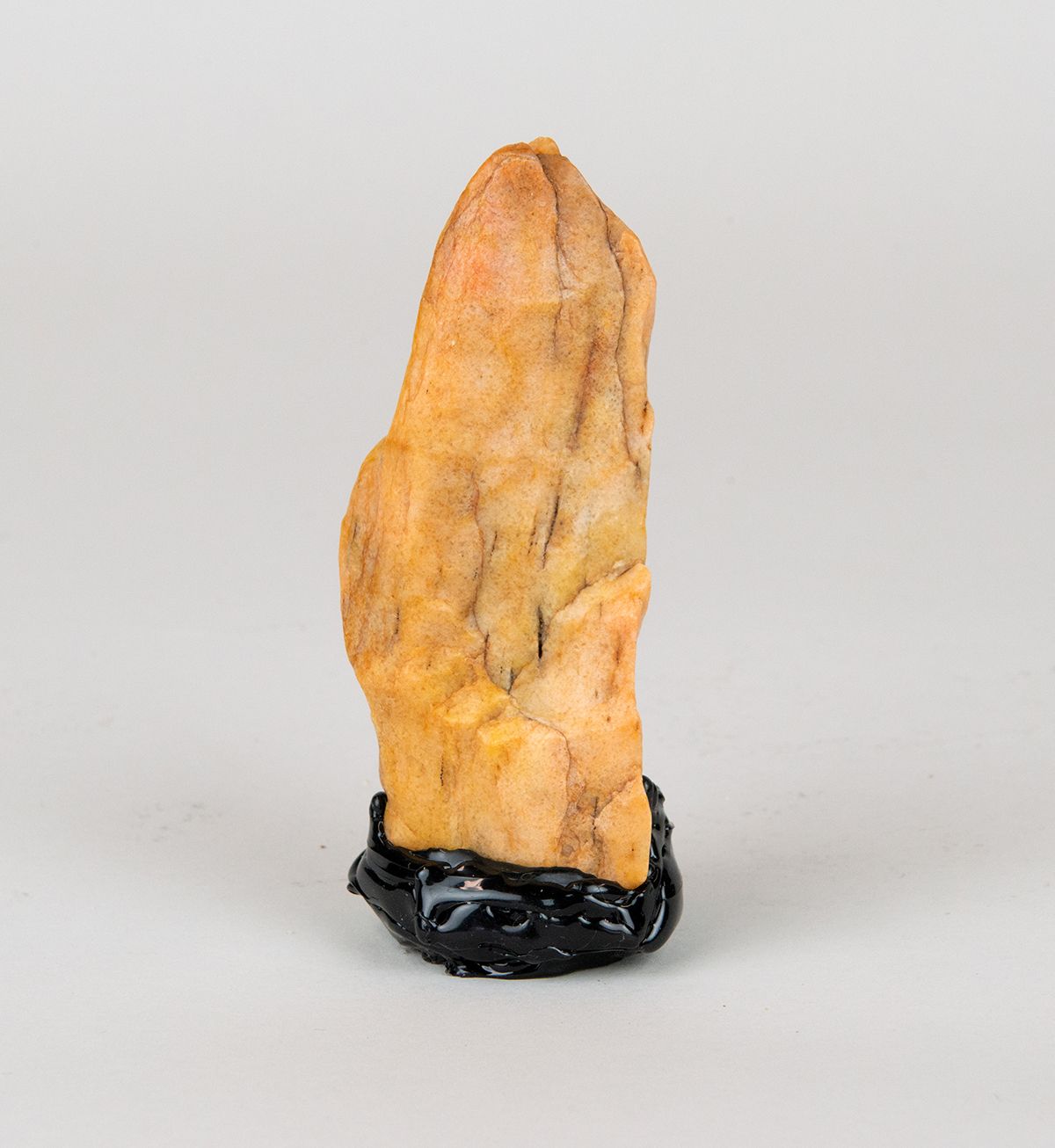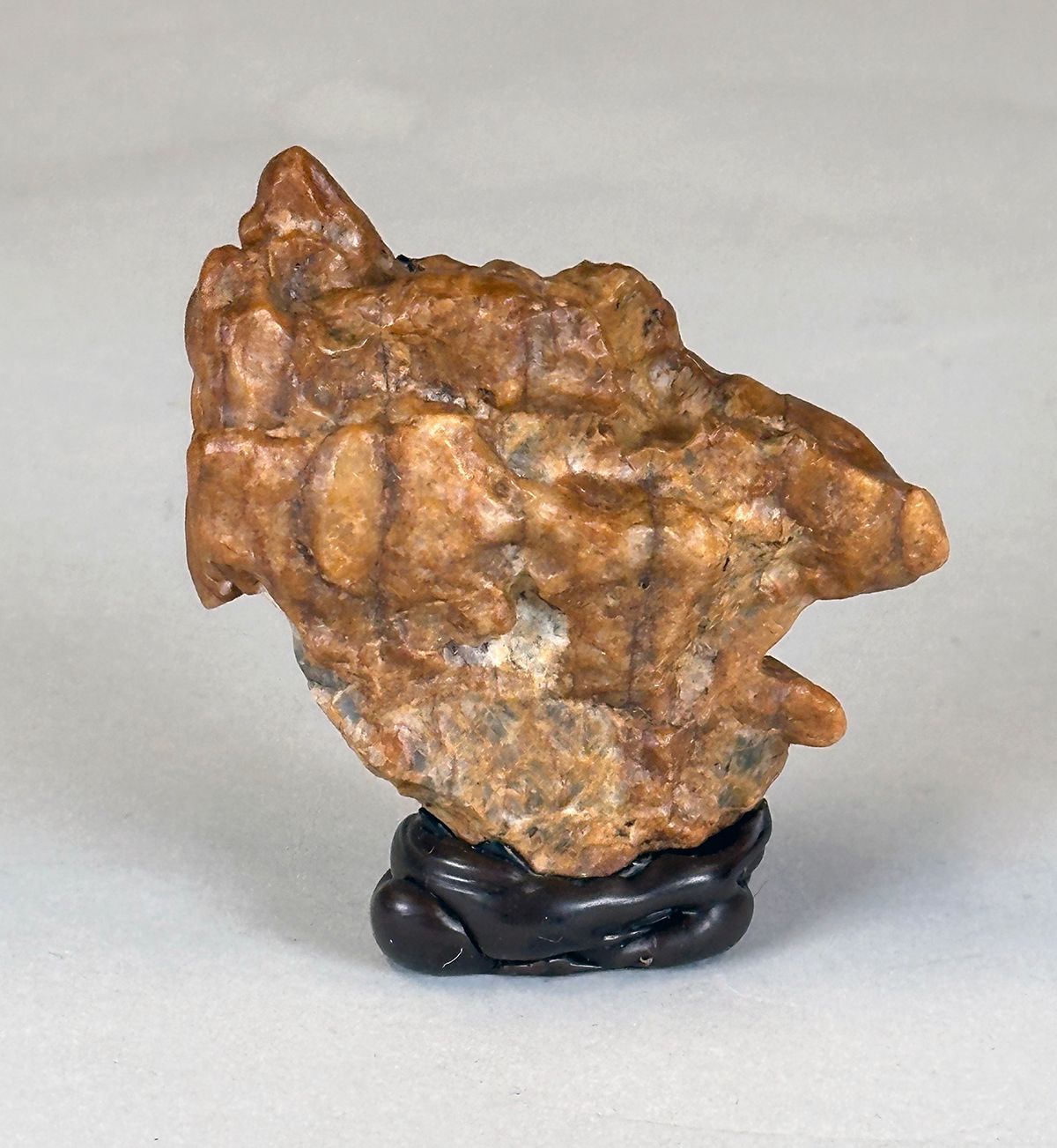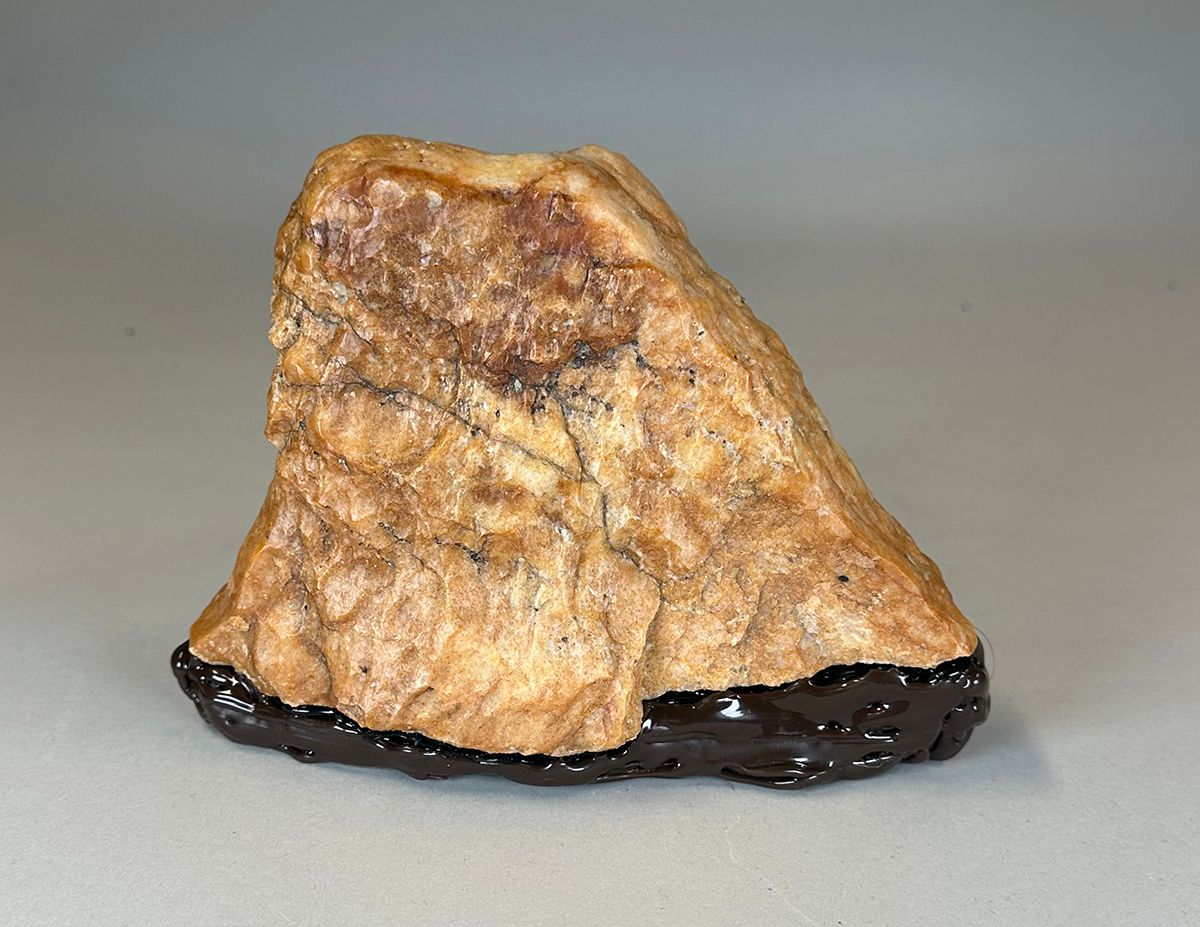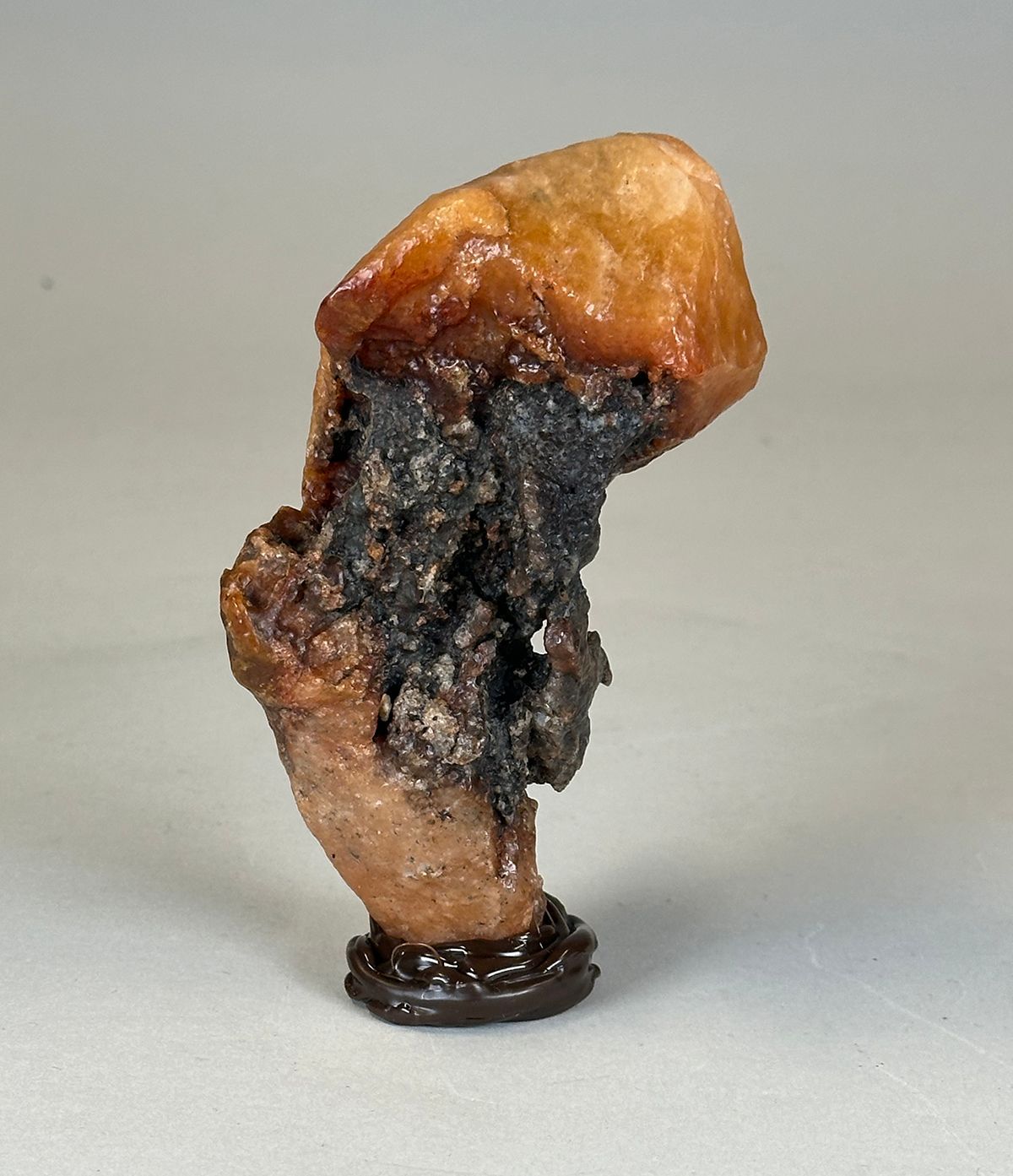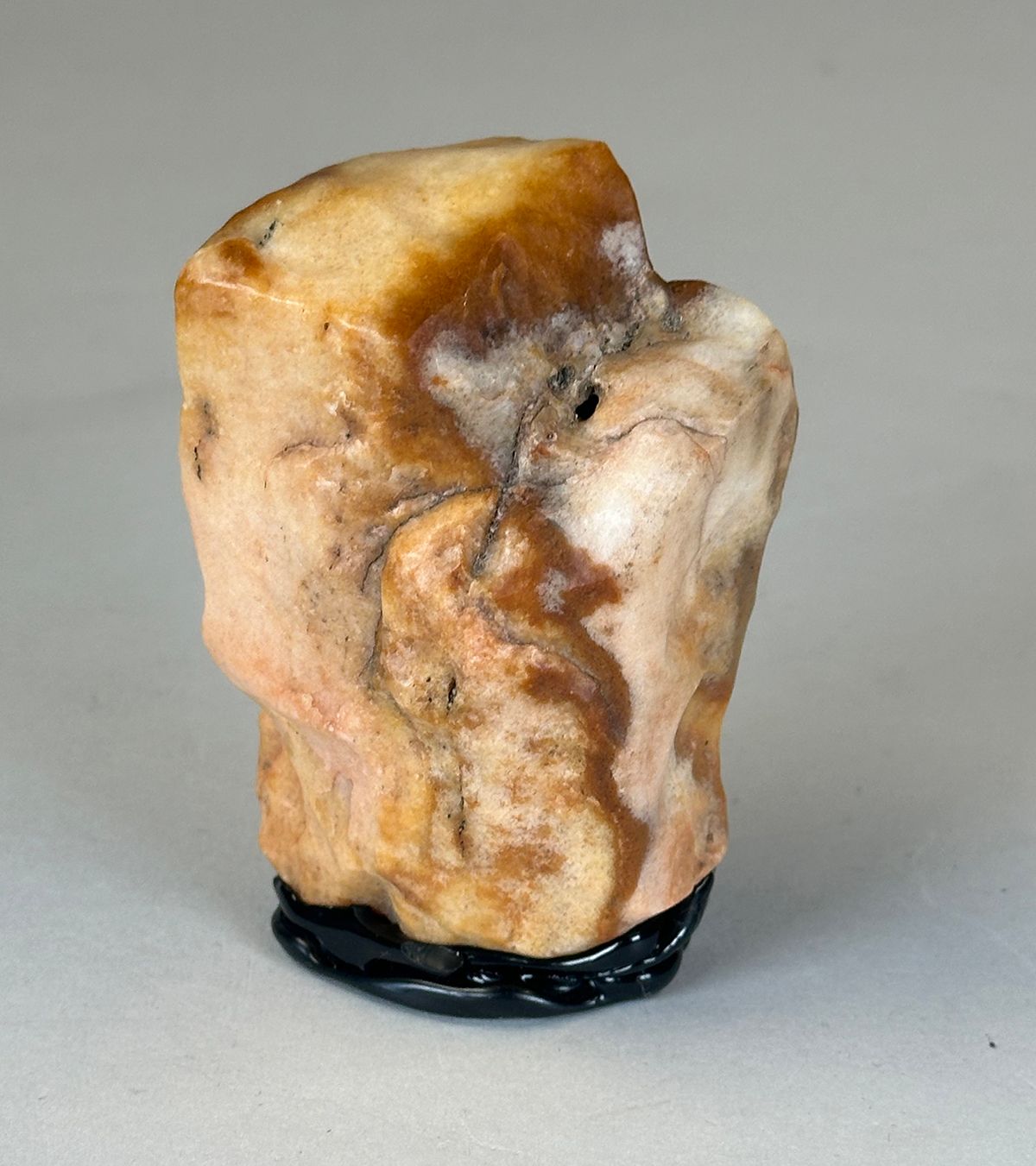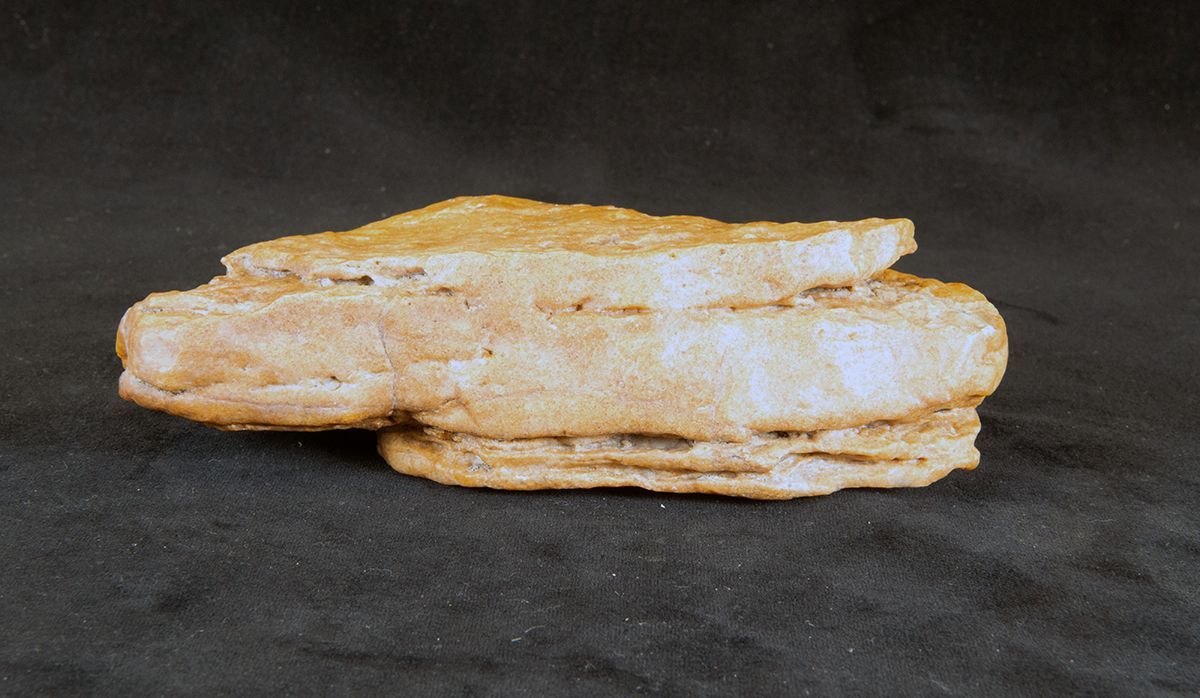North American Viewing Stones: USA
California Yellow Wax Stones
By Thomas S. Elias
The earliest documented records of Yellow Wax Stones date back to China's Song and Ming dynasties. As a result, we have long associated these hard, silica-rich, lustrous rocks with stone appreciation practices in southern China. Naturally polished by sand and gravel in flowing waters, these stones were found in where they were used as prized viewing stones. To learn more about Chinese wax stones, go to http://www.vsana.org/ar-02-Chinese-wax-stones.
Asian wax stones have been described as composed of silica—typically in the form of quartz that contains impurities, often iron oxides, that give the stones their golden brown to deep tan color. The name “wax stones” comes from the wax-like surface texture of these stones. These stones are exceptionally hard and rated between 6 .5 and 7 .5 on the Mohs hardness scale, a level comparable in hardness to jade.

Four Yellow Wax stones from Guangdong province in southeastern China.
While we have associated these beautiful stones with southern Asia, wax stones are found in other regions of the world. In recent years, stone collectors have found Yellow-wax stones in the Garnet Hill area near Palm Springs in southern California. The late avid rock collector Ralph Johnson discovered a large example of a wax stone in the area. Due to its size and form, Johnson’s stone may best be used as a garden stone rather than an indoor viewing stone.
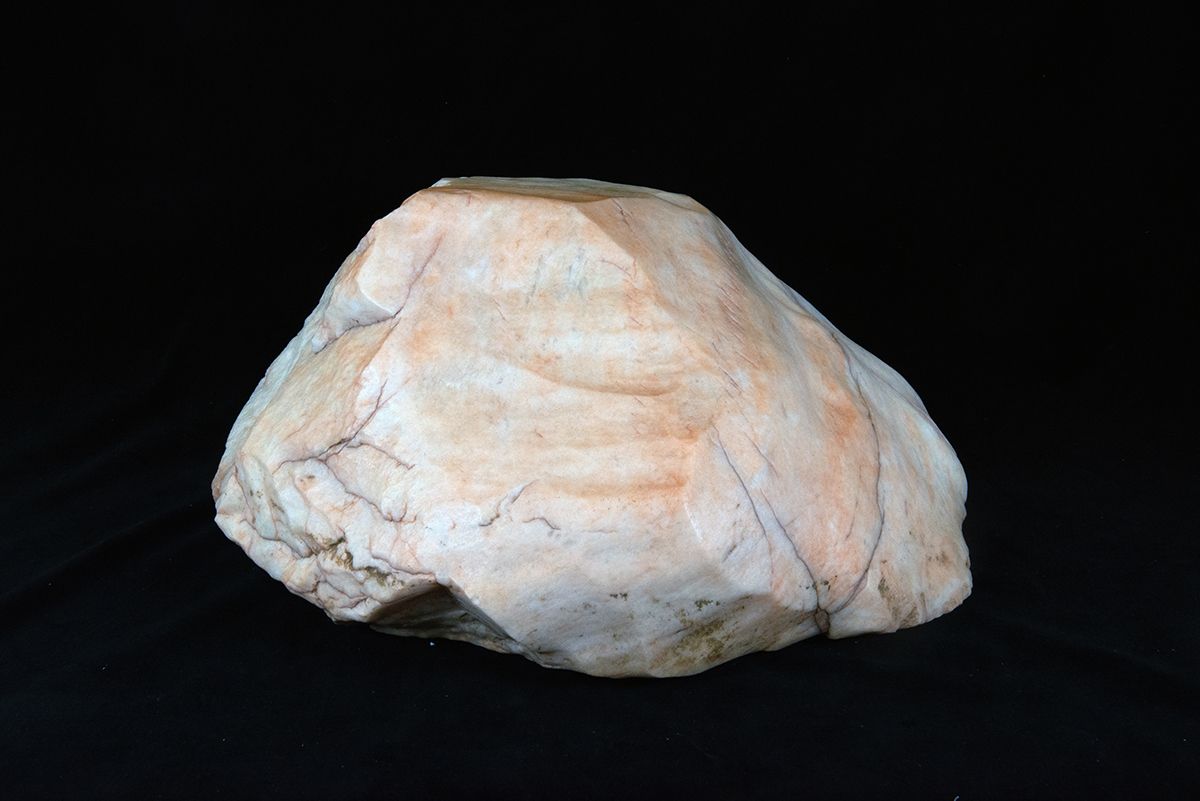
Ralph Johnson collected stone. It is 37 cm wide, 19 cm high, and 33 cm depth
Janet Cass collected many Yellow Wax Stones in the Garnet Hill area. Cass, a recognized abstract expressionist artist, has assembled a collection of these stones and made contemporary-styled bases for them. Cass made the bases for these stones using the glue gun technique. This involves the use of thermoplastics such as different colored polyethylene sticks that are melted in a hand-held gun-like device and applied to the base of the stone. The resin hardens quickly to the form of the stone but does not adhere to the rock. The rock can be easily separated from the base.
One of Cass’s California wax stones was sent to Dr. Stephen Tait, a geologist, for analysis. According to Tait, “The California Wax stone is most likely a chalcedony. Chalcedonies are composed of microcrystalline quartz. The family of chalcedonies includes chert, flint, heliotrope (bloodstone), jasper, agate, and so on.” Tait felt that the California Wax Stones could have been formed by desert winds containing sand or by the precipitation of silica from water in cracks or cavities of another stone.
The California wax stones are very similar to stones collected and appreciated in China. We should look at Chinese viewing stone standards in evaluating these New World stones rather than comparing them to Japanese suiseki criteria. They should not be dismissed because of their light color. The California Wax Stones reflect the geology of America and are fully acceptable in the emerging concept of North American viewing stones.
Some of Janet Cass’s collected stones are featured below.:
Due to their shape, form, and color, the most desirable wax stones are typically object, pattern, or abstract types rather than landscape-viewing stones. The lustrous surface appearance and their semi-translucency add to their appeal. The collecting of wax stones in North America is in its infancy stage. Further searching for wax stones in North America may yield some excellent viewing stones.

